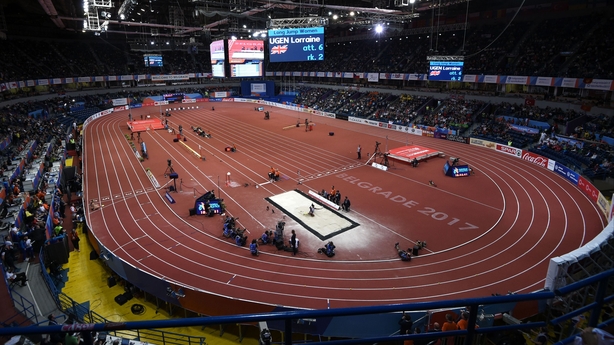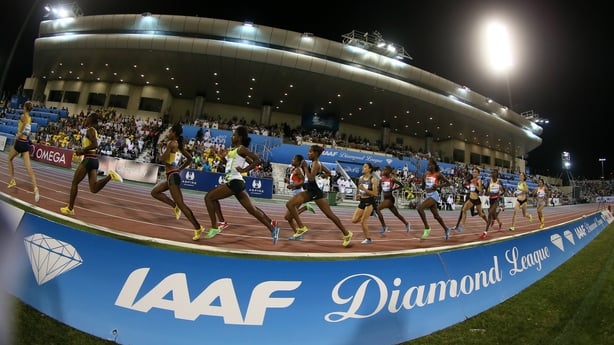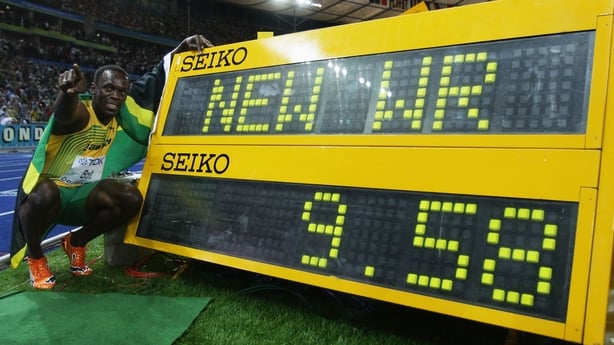If absence makes the heart grow fonder, then you’d imagine sports fans everywhere should be relishing the return of the IAAF Diamond League this week – that is, if they know what it is.
Because for many, even those with an interest in athletics, the sport’s elite circuit passes them by outside of major championships, even when household names to Irish sports fans such as Thomas Barr or Usain Bolt are gracing our screens on a weekday evening.
We may be more than three months out from the World Championships in London, but for all athletics anoraks the season begins this Friday night in Doha, Qatar.
That’s where, after an eight-month absence, the Diamond League makes its return. The IAAF are hoping that an adjusted format will make it hit home for the general sports fan, or at least register as more than a faint blip on their radar.
These days, Ireland has only a handful of athletes capable of getting a spot in these races – Thomas Barr, Mark English and Ciara Mageean being the big three to look out for during the season ahead.
Together with the race walkers and marathoners, they will form the bulk of our team in London later this year, where Irish athletics will be hoping – needing – a better showing than at the recent European Indoors in Belgrade.
We failed to place a single athlete in the top eight there but when you look at it objectively, our bigger names were missing.
The athletes who have carried our chances at so many championships – Rob Heffernan, Thomas Barr, Mark English, Fionnuala McCormack – are the people who will be adding value once we get to London.
Learning curve

What will be good to see after Belgrade is how athletes took it on board: have they made some changes, learned from the experience? Maybe it was the kick in the backside some people needed; maybe there were a few names who were big on the domestic scene but have been given a rude awakening on the international scene.
If so, I know how they feel.
In 2006 I went into the European Championships in Gothenburg with a bit of expectation. I had the talent to make the final, but I didn’t get near that. I came last in my semi-final. I froze, I bottled it – got to the big stage and struggled to deal with nerves, pressure and doubts.
That was a big learning curve. It forced me to ask questions about what I was doing and why was I doing it. That’s when I decided to fully focus on athletics and change my environment.
I’d like to think the athletes on the plane home from Belgrade said to themselves: ‘okay, here’s where I’m at. What can I take from it? What can I learn from it? What can I improve upon?’
If they can improve on one or two things then the experience will have been a positive. With the summer fast approaching, they have the opportunity to quickly see if those changes work out.
There have been also been some big changes at Athletics Ireland since Belgrade, with Paul McNamara taking over from Kevin Ankrom as Director of High Performance. Time will tell whether that will prove a good appointment, but right now it seems wise to let him get on with the job.
In many years, at this point in the season, I’d be laying out a racing plan that included stops on the Diamond League circuit, but these days I’d need to be more than a second quicker over 400m to get a lane at those meetings.
That in itself creates a problem for many athletes slightly below the top tier, as the Diamond League has incorporated the majority of the best meetings, leaving scarce opportunities elsewhere for athletes to secure qualification times for the World Championships.
Adapt or die

The Diamond League, currently in its eighth season, consists of 14 meetings which run from May to September, spanning 11 countries and four continents.
This year, the big change to the format is that the first 12 meetings will serve as qualifiers for the two finals – in Brussels and Zurich – where athletes will compete for a first prize of $50,000 in each of the 16 disciplines.
The concept is good, but the problem for the IAAF is that I still don’t think it’s hitting home. To ask people around Ireland, I don’t think many even know it’s on, TV coverage is limited and not available to all.
There’s no escaping, too, that the negative media coverage around athletics has hampered it in terms of getting people to watch.There are other factors, too, like competition from a number of sports and the appeal of athletics.
The fact they’re changing tells me the powers that be aren’t satisfied with the response, and this was something IAAF President Sebastian Coe alluded to last week: that the sport has to adapt or it will inevitably die.
I’ll be interested to see how things have changed on Friday night in Doha, the following week in Shanghai, and a fortnight after that in Eugene, Oregon. From Asia to America and back to Europe, the world’s best athletes are on their marks for the summer ahead.
For those of us who care about the sport, the only hope is that enough people will still want to watch.
Record reset a step in right direction

Yesterday's proposal from European Athletics Association to start with a clean slate for all world records from 2005 has divided opinion.
The cut-off year is due to the fact that no urine samples have been stored for re-testing. Some athletes are in a position to lose their hard-earned clean world records, which I understand is very frustrating.
However, the IAAF cannot stand by some records from the 1980s, which were a result of individual or state sponsored doping.
It will be hard to get the balance right, but I think the powers that be have to at least try to clean up our sport.
Maybe it’s a case of leaving the current records in place but in order for a new record to be ratified, the new criteria and protocols of numerous testing in the months prior to record, testing immediately post performance and the storing of samples are implemented.
This would force governing bodies and meeting directors to test athletes on a more on going basis.


